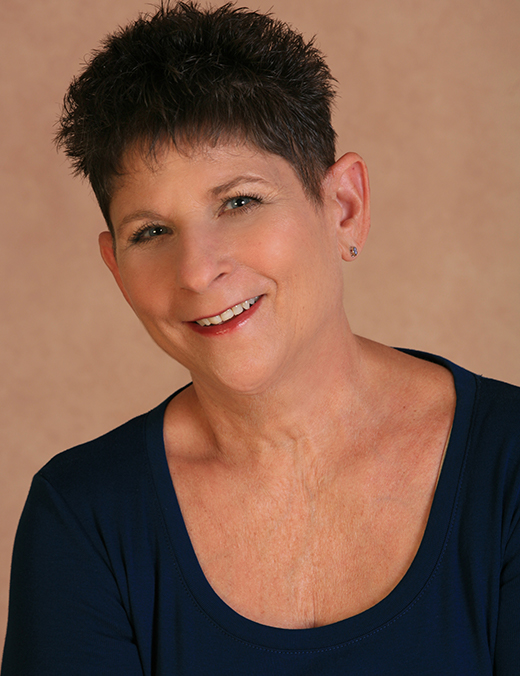25 years as a business owner – looking back on the road that led me here (Part 4)
 Sometimes things happen for a reason. One thing became incredibly clear. I needed to call my own shots. By the time I made the decision to start my own business in 1997, I had already had more than 30 jobs. Other than my work as a franchise consultant, and my work in the staffing industry, I had chosen most jobs solely for financial reasons. They were jobs, not callings. That approach hadn’t really brought me any satisfaction. I was no longer willing to tolerate unseemly circumstances or highly political environments for a pay check. I had learned enough lessons about what worked for me, and what hadn’t. I was ready to sail forward. I decided it was time to do what I had been best at: helping people find rewarding work and navigate work-related issues.
Sometimes things happen for a reason. One thing became incredibly clear. I needed to call my own shots. By the time I made the decision to start my own business in 1997, I had already had more than 30 jobs. Other than my work as a franchise consultant, and my work in the staffing industry, I had chosen most jobs solely for financial reasons. They were jobs, not callings. That approach hadn’t really brought me any satisfaction. I was no longer willing to tolerate unseemly circumstances or highly political environments for a pay check. I had learned enough lessons about what worked for me, and what hadn’t. I was ready to sail forward. I decided it was time to do what I had been best at: helping people find rewarding work and navigate work-related issues.
At the time, I was ready to work out of my home. For many of the preceding years, I had already worked from home, so it was a smooth transition. I had plenty of space to be able to meet with clients or deliver trainings, and there was ample parking. It never occurred to me that people might not want to come to my home. As it turned out, in 25 years, there may have been one person who raised a concern.
I started my business just before the dot com bubble burst.
 People with technical educations and expertise thrived in the 90’s. Manufacturing was still down, and at the beginning of the decade there was a big divide between skilled and unskilled work opportunities. The dot com explosion changed things. With all of the new businesses, support roles (HR, accounting, finance) gained momentum. Demand grew, and with that, wages did as well. It was exciting, but at the same time, it was unsustainable. I started my business just before the dot com bubble burst and everything changed. I offered 1:1 coaching and worked part time doing outplacement through a national firm and also through the Transition Assistance Program offered by the Department of Labor. Later I started delivering training classes focused on communication and productivity for the USDA Graduate School (now called the Graduate School USA), and other private businesses.
People with technical educations and expertise thrived in the 90’s. Manufacturing was still down, and at the beginning of the decade there was a big divide between skilled and unskilled work opportunities. The dot com explosion changed things. With all of the new businesses, support roles (HR, accounting, finance) gained momentum. Demand grew, and with that, wages did as well. It was exciting, but at the same time, it was unsustainable. I started my business just before the dot com bubble burst and everything changed. I offered 1:1 coaching and worked part time doing outplacement through a national firm and also through the Transition Assistance Program offered by the Department of Labor. Later I started delivering training classes focused on communication and productivity for the USDA Graduate School (now called the Graduate School USA), and other private businesses.
The first hurdle…
 The first hurdle I faced when I started my business was a physical breakdown. The culmination of years of lugging around heavy training materials in airports and too many uninterrupted hours hunched over the computer took its toll. Just months after starting my business, I started having intense pain in my back. The pain escalated and I was unable to work around it. It turned out I had two herniated disks in my neck. Next was surgery, and following that, I wore a neck brace, 24/7 for 3 months. My husband or friends drove me to teaching engagements. Then once I was on site, people greeted me and graciously carried my materials. One very special colleague created handmade heat packs for my neck and shoulders and kept them warm for me throughout the day. It was a long three months.
The first hurdle I faced when I started my business was a physical breakdown. The culmination of years of lugging around heavy training materials in airports and too many uninterrupted hours hunched over the computer took its toll. Just months after starting my business, I started having intense pain in my back. The pain escalated and I was unable to work around it. It turned out I had two herniated disks in my neck. Next was surgery, and following that, I wore a neck brace, 24/7 for 3 months. My husband or friends drove me to teaching engagements. Then once I was on site, people greeted me and graciously carried my materials. One very special colleague created handmade heat packs for my neck and shoulders and kept them warm for me throughout the day. It was a long three months.
I worked through all of the physical challenges.
But physically, I had only just started falling apart. Within a year I had to have sinus surgery. Then carpel tunnel surgery. I worked through all of the physical challenges and plunged forward. At the time, it never occurred to me to stop building my business. As soon as I could, I started presenting at job fairs and developed a sound client base. There were a lot of unemployed people looking for a magic pill. Many were transitioning into new fields and had no idea how to go about it. I could see they needed to understand what they were facing to be able to succeed. I was on a mission.
It was critical to be creative and flexible to be able to move in a new direction.
 Although not suggested by outplacement companies at the time, functional resumes were successful during the early 2000’s. When a candidate changes industries, it’s often very difficult to see relevance in a traditional chronological resume. Functional resumes allow candidates to showcase skills from older experiences. During these years, it was critical to be creative and flexible to be able to move in a new direction. I tested this theory by doing presentations for human resource organizations. Their focus on job titles, years in an industry and education was missing the mark. I engaged the audiences and showed them how their typical resume review processes caused them to pass over great candidates. Instead, we looked at the skills that were required to have been successful in each past experience. It became clear that many candidates’ skills would actually allow them to be successful in other roles with different titles.
Although not suggested by outplacement companies at the time, functional resumes were successful during the early 2000’s. When a candidate changes industries, it’s often very difficult to see relevance in a traditional chronological resume. Functional resumes allow candidates to showcase skills from older experiences. During these years, it was critical to be creative and flexible to be able to move in a new direction. I tested this theory by doing presentations for human resource organizations. Their focus on job titles, years in an industry and education was missing the mark. I engaged the audiences and showed them how their typical resume review processes caused them to pass over great candidates. Instead, we looked at the skills that were required to have been successful in each past experience. It became clear that many candidates’ skills would actually allow them to be successful in other roles with different titles.
 In the early 2000’s, evaluating the number of years in a job was ridiculous. Many jobs were new. There hadn’t been enough history for some roles to expect the typical “3-5 years” of experience. Similarly, someone’s education from 10-20 years prior had little to do with current required skills. At that time, most human resource departments and recruiters were still unaware of what they should really be looking for when searching for the right employees. Based on my conversations with human resource professionals and hiring managers, I knew there were not enough conversations between the hiring managers and the people managing the recruitment processes. Many great candidates fell through the cracks. Old methods weren’t working. It wasn’t a surprise when Fast Company published “Why we hate HR” in 2005.
In the early 2000’s, evaluating the number of years in a job was ridiculous. Many jobs were new. There hadn’t been enough history for some roles to expect the typical “3-5 years” of experience. Similarly, someone’s education from 10-20 years prior had little to do with current required skills. At that time, most human resource departments and recruiters were still unaware of what they should really be looking for when searching for the right employees. Based on my conversations with human resource professionals and hiring managers, I knew there were not enough conversations between the hiring managers and the people managing the recruitment processes. Many great candidates fell through the cracks. Old methods weren’t working. It wasn’t a surprise when Fast Company published “Why we hate HR” in 2005.
We covered ways to explore undefined career paths.
During the first 10 years I was in business, I delivered job search training to members of the military through the Transition Assistance Program (TAP). The classes were comprised of people at all levels who were exiting their military careers and looking for work as civilians. Resumes were a big challenge. The words used in the military didn’t match industry job descriptions. I taught classes on how to translate military ease into everyday language that private industry employers could relate to. I also introduced class participants to processes they were unfamiliar with. And we covered ways to explore undefined career paths.
It turned out that my experience working with prior military candidates in the staffing industry proved to be valuable. I related feedback received from employers to help former military candidates to understand the behaviors and assumptions that would need to change to be highly valued in an unfamiliar environment. Everything I had found a few years before was still true. I relied on the relationships I had built while in the staffing industry to pull together employer panels to speak to the large classes of TAP participants about what they were looking for.
I developed some very, very close friendships that I maintain today.
The people I worked most closely with on the military bases shared my goal of helping the students succeed and it was a treat to work with them. Over the years, I worked with the Navy, Army, Air Force and Coast Guard. The experience changed many perceptions I had previously held and I developed some very, very close friendships that I maintain today.
My contacts at the military bases connected me with the Graduate School USA. The classes I delivered for that organization had everything to do with people being successful and work, so I was all in. I juggled traveling down the West Coast delivering trainings for the Graduate School and the military, as I continued to meet with clients 1:1 and offered classes for job seekers out of my home.
It was hard to say no.
 It was exciting and stressful at the same time. They often asked me to take on a class with little notice. Just as I had many bags packed when I was a Franchise Consultant, I had to be prepared to deliver some classes with little notice. As a contractor, I could choose to accept the work or not. I truly loved engaging with class participants and watching the lights go on in their eyes, so it was hard to say no.
It was exciting and stressful at the same time. They often asked me to take on a class with little notice. Just as I had many bags packed when I was a Franchise Consultant, I had to be prepared to deliver some classes with little notice. As a contractor, I could choose to accept the work or not. I truly loved engaging with class participants and watching the lights go on in their eyes, so it was hard to say no.
Having a choice was somewhat empowering. But there was still an element of having to conform to rules that didn’t make sense that nagged at me. Tune in next month for the next twist in my journey.
Stay tuned for Part Four. Click here if you missed Parts One and Two and Three.
For more career advice, check out my Career Assessment, Goal Setting, Strategic Networking and Joy Search webinars and follow me on LinkedIn and Twitter.






